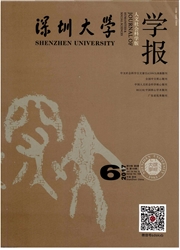

 中文摘要:
中文摘要:
散工主要指城市外来工中从事各种"自由"职业的人。散工现象的出现始于20世纪80年代中期"打工潮"。随着90年代以后产业结构的转型,就业压力的增大,散工队伍日益扩大,成为一个不容忽视的群体。基于对当前中国大陆经济最具活力的东南沿海地区的散工在人口学特征、工作和收入、生活起居、社会关系、社会保障和救助等方面的实证分析,表明该地区散工呈现出经济贫困、身份地位边缘化、择业和日常行为的"自由性"、社会关系的同质性和内敛性,以及潜在危险性等群体性特征。重视和解决散工问题应该从社会结构、适应问题、非正式关系等多方面入手。
 英文摘要:
英文摘要:
Casual workers mainly refer to the "freelancing" people among migrant workers in cities. The phenomenon of casual work started during "the migrant worker rush" in mid-1980 s. With the adjustment of industrial structure and the increasing pressure of employment, casual workers have been growing in number and become an important group that cannot be neglected. Based on the empirical analysis of the demography characteristics, job, income, daily life, social relationships, social security and assistance of the casual workers in the coastal areas of southeast China, the most vibrant economic region in China, we find the casual workers there are economically poor, marginalized in status, "free" in job choice and daily behavior, homogenous and introverted in social relationship, and potentially dangerous. To pay more attention to and solve the problem of casual workers, we should start with the issues such as social structure, adaptation issue, and informal relationship.
 同期刊论文项目
同期刊论文项目
 同项目期刊论文
同项目期刊论文
 期刊信息
期刊信息
